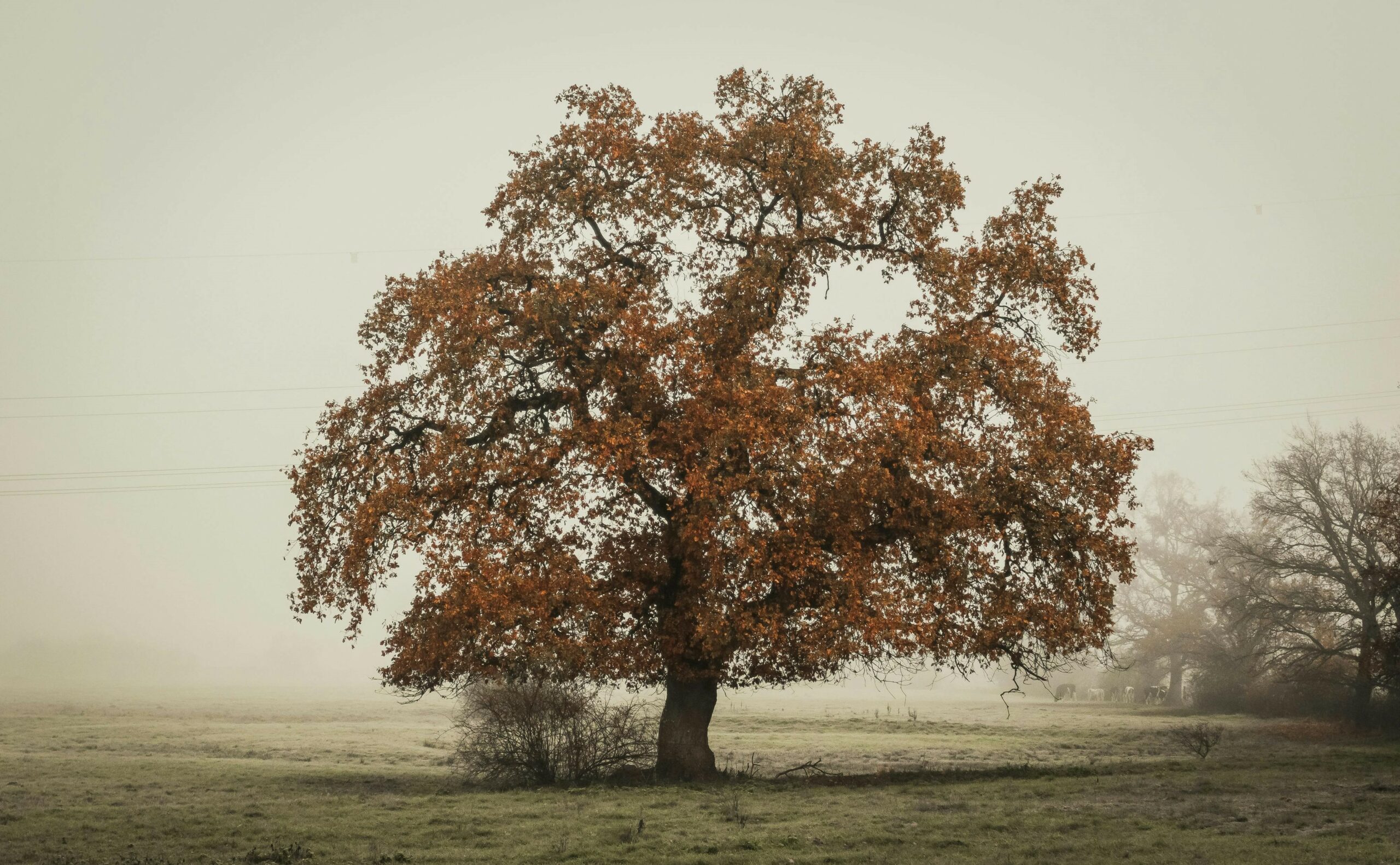The stubborn beauty of oak leaves: Marcescence explained

MILAN, Ill. — Three of my most prized trees are the oaks we planted in our front yard shortly after we moved. They share our front yard with a black gum (Nyssa sylvatica), red twig dogwoods (Cornus sericea), witch hazel (Hamamelis vernalis) and apple (Malus spp.) trees.
Our adopted oaks have become established and have been thriving and our family finds great joy in the observation of them through the seasons. As autumn fades to the background and winter weather creeps in, our trees have gone dormant and the leaves have fallen. Well, most of the leaves have fallen, the oaks are stubborn about shedding their leaves, retaining them throughout much of the winter season.
The retention of leaves throughout the growing season is an adaptative strategy known to us as marcescence. Oak species (Quercus sp.) and beech trees (Fagus sp.) are commonly observed exhibiting this characteristic. But why do these trees hold on to their leaves rather than shed them for the winter like so many other species? The answer remains unclear and is likely the evolutionary result of many factors. Ecologists have developed several theories that offer possible explanations.
What is marcescence?
In most deciduous trees, leaves from the previous growing season are aborted as winter approaches. Leaves are no longer adding more value to the tree, by way of food production, than they would require remaining on the tree, so they are shed from the canopy. When day length shortens and temperatures drop, trees form a layer of specialized cells at the base of the leaf cutting off the supply of water and nutrients, allowing it to drop from the tree. However, in species that retain their dead leaves throughout the winter, this abscission layer is delayed or only partially forms, allowing leaves to remain for a while longer.
Marcescence tends to be more prominent in juvenile trees or on lower branches of mature trees. This pattern has led scientists to speculate about its adaptive significance.
Theories on marcescence
One theory suggests that the retention of leaves acts as a protective barrier for the tree’s buds. In winter, the delicate buds of new growth are particularly vulnerable to extreme cold, desiccation, and frost damage. Dead leaves may serve as a physical barrier, shielding buds from drying winds while preserving moisture. In especially windy landscapes or where trees are exposed, like a savanna, this feature of protecting future growth would be critical to long-term survival and reproduction.
Another theory offers that the retained leaves serve as a deterrent to herbivores that might enjoy browsing on the supple buds and twigs during months when food is scarce. Retaining dry, unpalatable leaves may obscure the nutritious buds enough to keep deer and other browsing animals away. It is also speculated that the rustling sound and movement of the leaves may discourage animals from approaching. By preserving buds for the following year, trees have an advantage as new growth is maximized.
When tree leaves are aborted in the late winter or early spring, an ecosystem advantage may be gained as nutrients are made available. Deciduous trees that shed their leaves in the autumn risk those leaves, and their nutrients, being washed away with winter precipitation. Leaves shed in the spring decompose to provide a source of nutrients just as trees begin actively growing. This is theorized as giving the plants in these ecosystems a competitive advantage.
Potential disadvantages of hold tight to leaves
While marcescence may offer advantages for tree species, there are potential disadvantages. As leaves are retained through the season, they increase a tree’s surface area, increasing the surface area exposed to wind and ice making trees more susceptible to branch failure during storms.
The trees that are living in our communities may experience the disadvantage of more broken limbs as a result being in an environment that is vastly different than the ecosystem where marcescence evolved as an advantage.
Yet another reason oaks are outstanding
The adaptation of marcescence is a compelling example of how plants have evolved unique strategies in response to the environment. Whether by protecting buds, deterring herbivores, or enhancing nutrient cycling, retaining leaves throughout the winter appears to offer oaks an advantage that outweigh the drawbacks.
As winter progresses, you will undoubtedly observe oaks that stand dormant yet covered in leaves from the past growing season. When you see this, remember that you are witnessing an adaptive strategy that developed over thousands of years, and it is one of the many unique ways to observe nature’s ingenuity.
Miss Clipping Out Stories to Save for Later?
Click the Purchase Story button below to order a print of this story. We will print it for you on matte photo paper to keep forever.

